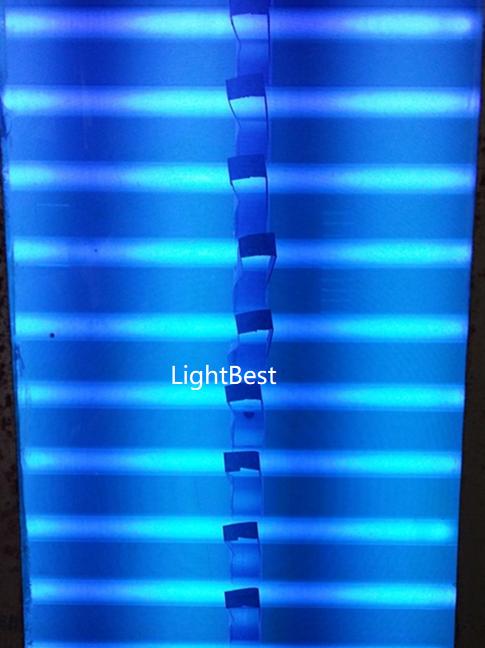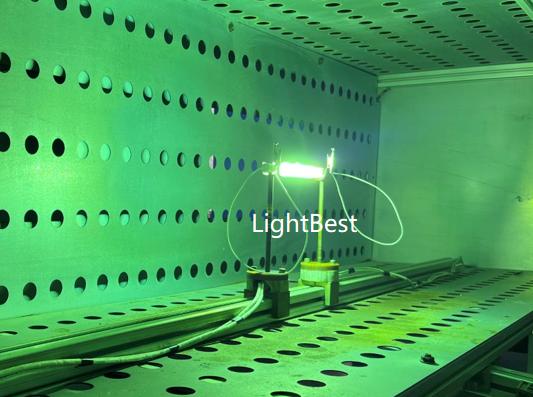I. Application Principle: Efficient Purification Achieved by Dual-Wavelength Synergy
Dual-wavelength lamps (usually a combination of 185nm and 254nm) realize efficient decomposition of organic pollutants and disinfection in waste gas treatment through the synergy of two ultraviolet wavelength bands. The core principles are as follows:
1. Function of 185nm Vacuum Ultraviolet (VUV)
• Ozone Generation: The 185nm wavelength ultraviolet ray has high energy, which can directly decompose oxygen (O₂) in the air to generate highly oxidizing ozone (O₃). Ozone can quickly oxidize and decompose pollutants such as volatile organic compounds (VOCs), hydrogen sulfide, and ammonia in waste gas, converting them into carbon dioxide (CO₂) and water (H₂O).
• Synergistic Oxidation: When ozone works together with 254nm ultraviolet rays, it can further decompose complex organic substances and improve treatment efficiency. For example, in the treatment of chlorine-containing organic compounds, the synergistic effect of ozone at 185nm can significantly enhance the degradation effect.
2. Function of 254nm Medium-Wave Ultraviolet (UVC)
• Photocatalytic Activation: The 254nm ultraviolet ray can excite the electron transition of photocatalysts (such as titanium dioxide TiO₂), generating highly oxidizing hydroxyl radicals (·OH) and superoxide ions (O₂⁻). These radicals can efficiently decompose organic pollutants in waste gas and even mineralize some refractory substances.
• Direct Sterilization: The 254nm ultraviolet ray can destroy the DNA structure of microorganisms, directly killing pathogens such as bacteria and viruses, thereby achieving waste gas disinfection.
3. Dual-Wavelength Synergistic Effect
• Broad-Spectrum Degradation: The 185nm wavelength deals with refractory organic compounds, while the 254nm wavelength handles conventional pollutants. The two complement each other to cover a wider range of pollutant types.
• Efficiency Improvement: Experimental data shows that the average removal rate of VOCs by dual-wavelength lamps is 56.67% higher than that by single-wavelength (254nm) lamps, especially showing a significant effect in the treatment of low-concentration waste gas.
• No Secondary Pollution: Through the photocatalytic oxidation reaction, pollutants are completely decomposed into harmless substances, avoiding secondary pollutants such as solid waste generated by the traditional adsorption method or dioxins produced by the combustion method.

II. Core Characteristics: High Efficiency, Environmental Protection, and Strong Adaptability
1. High-Efficiency Purification Capacity
• High Removal Rate: The removal rate of VOCs by dual-wavelength lamps can reach more than 90%, and even exceed 95% in some scenarios, meeting strict emission standards.
• Rapid Reaction: Under ultraviolet irradiation, the photocatalytic reaction can be completed within seconds, making it suitable for treating high-flow waste gas.
2. Environmental Protection and No Pollution
• No Chemical Addition: It only relies on ultraviolet rays and photocatalysts, without the need for adding chemical agents, thus avoiding secondary pollution.
• Controllable Ozone: By adjusting the lamp power or matching with an ozone decomposition device, the ozone emission concentration can be controlled to ensure compliance with indoor or outdoor safety standards.
3. Strong Adaptability
• Multi-Industry Application: It is widely used in waste gas treatment in industries such as spraying, printing, chemical engineering, electronics, and waste disposal. It is especially suitable for treating refractory organic compounds such as benzene series and halogenated hydrocarbons.
• Compatibility with Other Technologies: It can be combined with processes such as water spray, activated carbon adsorption, and biological filter to form a multi-stage purification system, improving the overall treatment effect.
4. Stable and Reliable Operation
• Long Service Life: The quartz lamps are resistant to high temperature and aging, with a service life of 8,000-10,000 hours, reducing the frequency of replacement.
• Low Maintenance Cost: The structure is simple, and there is no need for frequent cleaning or replacement of catalysts. Only regular detection of ultraviolet intensity and cleaning of dust on the lamp surface are required.

III. Application Cases and Data Support
· Industrial Waste Gas Treatment: A spraying workshop adopted a dual-wavelength lamp photo-oxidation catalytic device. After treatment, the VOCs emission concentration decreased from 120mg/m³ to 3.5mg/m³, with a removal rate of 97.1%, meeting the "Emission Control Standards for Volatile Organic Compounds in Industrial Enterprises".
· Experimental Comparison: When the inlet concentration was 50mg/m³, the removal rate of VOCs by the 185nm+254nm dual-wavelength lamp was 96.75%, while that by the single-wavelength 254nm lamp was only 50.49%. The efficiency of the dual-wavelength lamp was nearly doubled.
· Cost-Effectiveness: The operating cost of dual-wavelength lamps is more than 50% lower than that of the catalytic combustion method, and no high-temperature equipment is needed, resulting in higher safety.
IV. Summary
Through the synergy of 185nm and 254nm ultraviolet rays, dual-wavelength lamps achieve the goals of efficient degradation of organic substances, disinfection, and no secondary pollution in waste gas treatment. Their core advantages lie in broad-spectrum adaptability, high purification efficiency, and low operating cost, making them one of the mainstream technologies in the field of industrial waste gas treatment. In the future, with the optimization of photocatalytic materials and the extension of lamp service life, their application prospects will be broader.
Post time:2025-09-17 15:57:28

